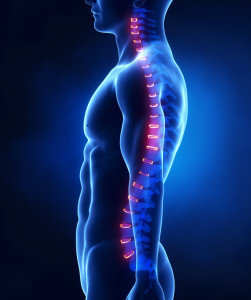
The thoracic spine is your mid back between lower back and neck. Each of the 12 vertebrae of your thoracic spine has a rib on each side. Acute thoracic spine pain can be very debilitating. When it hurts to breathe the joints between the ribs and the thoracic vertebral body and transverse process can be the source. Postural loading and stress are common causes of this type of pain. Another is trauma in sport, but you also need to make sure there are no rib or other fractures in these cases.
Simple analgesics are usually advised at first. Sometimes taping can limit the pain by restricting painful movement when pain is bad but shouldn’t be used for more than a few days. The next step is to get moving via walking in water or on land followed by stretches. At this stage massage and joint mobilisations can improve your overall movement and increase the speed of your recovery.
Get good advice early is the quickest way to get back to normal once you have acute thoracic pain. This also includes analysis of the causes and implementing movement-based prevention strategies. Read more here on how we can help or contact us on 4921 6879.

